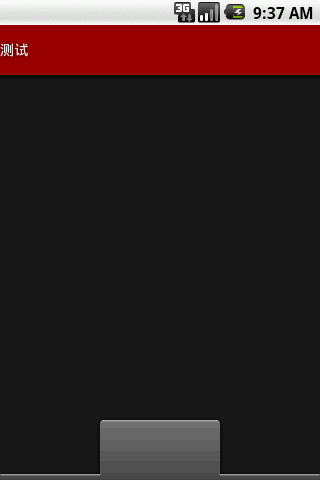Android自定义标题栏TitleBar布局
很多网友发现自己Android程序的标题栏TitleBar区域很单调,如果想个性化一些可以通过下面的方法来为自己软件的标题定制一个layout布局文件,比如浏览器的标题栏,它包含了网站的Favicon,自定义的进度条,和不确定的进度指示等等,实现的方法自己控制吧。下面代码在onCreate 中使用,同时顺序不要改变,否则将无法生效:
requestWindowFeature(Window.FEATURE_CUSTOM_TITLE); setContentView(R.layout.main); //软件activity的布局 getWindow().setFeatureInt(Window.FEATURE_CUSTOM_TITLE, R.layout.titlebar); //titlebar为自己标题栏的布局
下面举例说明:
一、 重点
一般应用的Title都是建立应用时在AndroidManifest.xml中配置的,或是用setTitle设置的简单字符串,要是想加入按钮,图片等多个复杂的布局,使用以下方法:
在窗口建立时,可以把一个xml布局设置成该应用的Title
二、 实例
a) 功能:把title设置成为一个字串和一个按钮的组合
b) 修改xxActivity.java代码
public void onCreate(Bundle savedInstanceState) { super.onCreate(savedInstanceState); requestWindowFeature(Window.FEATURE_CUSTOM_TITLE); // 注意顺序 setContentView(R.layout.main); // 注意顺序 getWindow().setFeatureInt(Window.FEATURE_CUSTOM_TITLE, // 注意顺序 R.layout.title); }
c) 填加title.xml代码
<?xml version="1.0" encoding="utf-8"?> <LinearLayout xmlns:android=http://schemas.android.com/apk/res/android android:layout_width="wrap_content" android:layout_height="wrap_content"> <TextView android:id="@+id/text" android:layout_width="wrap_content" android:layout_height="wrap_content" android:layout_alignParentLeft="true" android:text="text" /> <Button android:id="@+id/button" android:layout_width="wrap_content" android:layout_height="30px" android:text="button" /> </LinearLayout>
三、 注意
a) 注意设置顺序
requestWindowFeature要在setContentView之前
getWindow().setFeatureInit最好在setContentView之后
b) 注意requestWindowFeature(Window.FEATURE_CUSTOM_TITLE)不要和其它对TITLE的设置requestWindowFeature(xxxx)一起使用
这样虽然可以在一定程度上定制标题栏, 不过, 这里无法改变标题栏的高度和背景(背景设置之后会在两端有两个非常难看的边框). 据说, 原因是android 固有的.
这里有修改方法:
原理是这样的. 直接像上述代码那样添加title仅仅是把一个子界面添加到原有的title上的, 并没有改变原来的属性, 比如 标题栏大小, 标题栏背景. 这些需要在theme 主题里面定义.
因此先定义一个style, 若修改背景请修改android:windowTitleBackgroundStyle
若修改标题栏高度,请修改android:windowTitleSize
例子:
<?xml version="1.0" encoding="utf-8"?> <resources xmlns:android="http://schemas.android.com/apk/res/android"> <style name="CustomWindowTitleBackground"> <item name="android:background">#565656</item> </style> <style name="test" parent="android:Theme"> <item name="android:windowTitleSize">50dp</item> <item name="android:windowTitleBackgroundStyle">@style/CustomWindowTitleBackground</item> </style> </resources>
在程序的android manifest.xml中对应activity中添加属性 android:theme = "@style/test" 就可以了

<?xml version="1.0" encoding="utf-8"?> <manifest xmlns:android="http://schemas.android.com/apk/res/android" package="com.guardian" android:versionCode="1" android:versionName="1.0"> <application android:icon="@drawable/icon" android:label="@string/app_name" > <activity android:name=".Guardian" android:label="@string/app_name" android:theme = "@style/test" //就在这里 > <intent-filter> <action android:name="android.intent.action.MAIN" /> <category android:name="android.intent.category.LAUNCHER" /> </intent-filter> </activity> </application> <uses-sdk android:minSdkVersion="4" /> </manifest>
之后借助于设置自定义的标题栏xml文件,就可以自定义标题栏布局了
